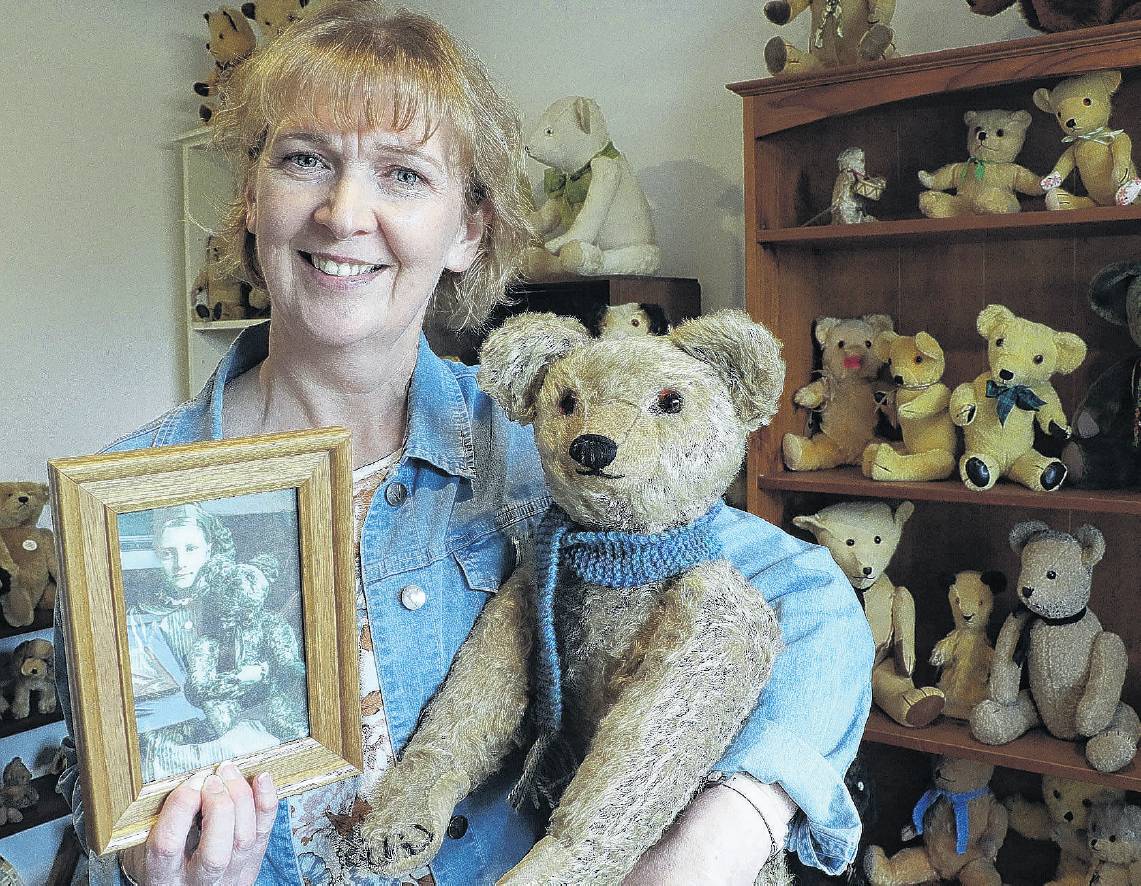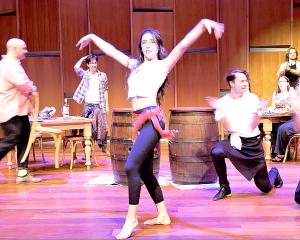
Over 100 years later, the photo has helped build the foundation of a teddy bear hospital in Kaiapoi.
The young girl was Kaiapoi resident Suzanne Irvine’s grandmother, Florence Fransden, and for more than 107 years ‘‘Old Ted’’ the teddy bear has been watching over generations of the Irvine family.
Taking care of Old Ted over the years inspired the former CTV camerawoman to start her Teddy Bear Hospital.
A few years ago she started making and repairing teddy bears part-time, but her love for restoring old heritage bears saw her start teddybearhospital.co.nz.
The mohair British Teddy Bear was made by the Terry Toy Company in East London and travelled to a Canterbury toy shop sometime before 1914.
In 1917 he was purchased by some of Florence’s family members who bought him to aid in her recovery from a near-fatal illness and a three-month stay in hospital.
When the photo was taken in 1917, three of her brothers went off to World War 1, never to return.
‘‘Old Ted sat on a small chair in the lounge of the family home on Moorhouse Ave.
‘‘My dad was an only child and he wasn’t allowed to play with him, and neither were we ever allowed to touch him.
‘‘That’s why he was in such good condition, as he just sat there, out of the sun,’’ Suzanne says. Old Ted was later passed on to Suzanne’s father Martyn Irvine, a retired carpenter, and in time he will pass him on to Suzanne who has recently restored him to his former glory.
‘‘Four generations of my family have worked on ‘Old Ted' to preserve his stability.
‘‘There were old stitches on his ears which my great-grandmother would have done.
‘‘Grandma kept him together sewing him up when the stitches failed over the years.
‘‘My dad tidied him up and replaced the eyes, and now I’ve cleaned him up and strengthened him so he’s looking as bright and sparkly as he was when he first came into our family.’’
Suzanne says Old Ted now has a shine on his fur that he never had before.
Sixty years of sitting near an open fire has coated it in black smokey ash and tar.
Suzanne is currently working on a 23-year-old Lion attacked by a dog, a 70-year-old rabbit and an 85-year-old teddy bear suffering from a bug infestation problem.
‘‘I love repairing the old teddy bears, I’ve only been in business for four weeks and people from all over are calling me up, surprised there is a teddy bear hospital service here in Kaiapoi.’’
‘‘That one I had to put in the freezer for 48 hours to kill off all the bugs, now I'm thawing him out before the restoration work starts.’’
Suzanne has been surprised by the demand for her skills.
‘‘It’s been crazy the demand, with many calls coming from Canterbury and just as many from cities up north.’’
She says Old Ted epitomises the physical longevity of heritage family bears.
‘‘They honour the legacy and heritage they represent in a family’s history.
‘‘It’s time for people to dig out these old bears from storage and create a lasting family heirloom for future generations to enjoy.’’
Old Ted's past
In 1890, William J. Terry founded his toy factory, based in east London.
The company was already famous for its soft toys before producing its first teddy bears in the early 1900s.
English bears, like Old Ted, usually had glass eyes with painted backs.
The webbed claw stitching on the bear's paws is another characteristic of English bears.
Terry died in 1924 and his son took over the company. But just before World War 2, the factory was shut down.
Made between 1905 and 1908 from shaggy mohair and stuffed with wood wool and kapok, these dolls set the standard for British bears.
Certified Terry bears like Old Ted now sell at international auctions for NZD$2000 and above, while many others reside in museums such as the Victoria & Albert Museum in London
- To get in touch with the Teddy Bear Hospital, email fixmybear@gmail.com














